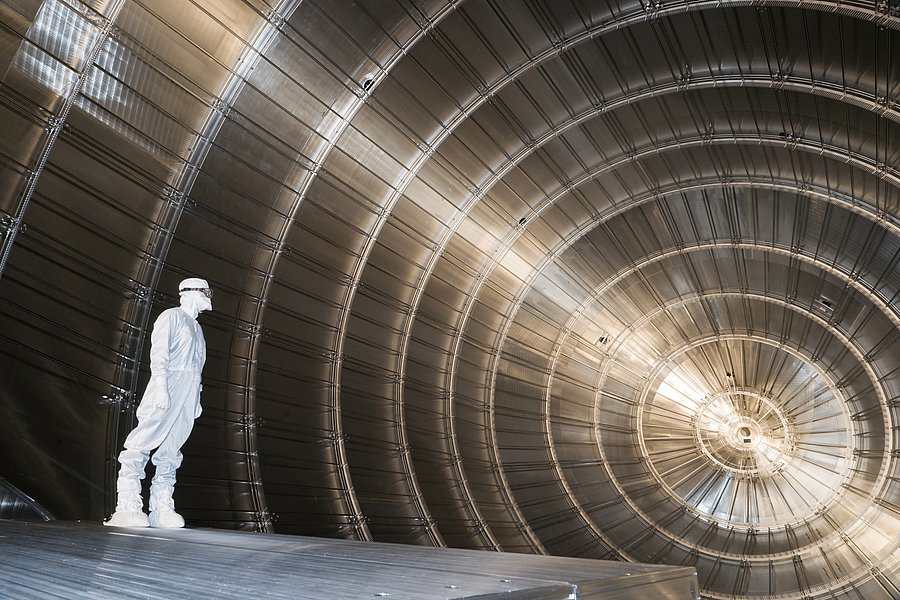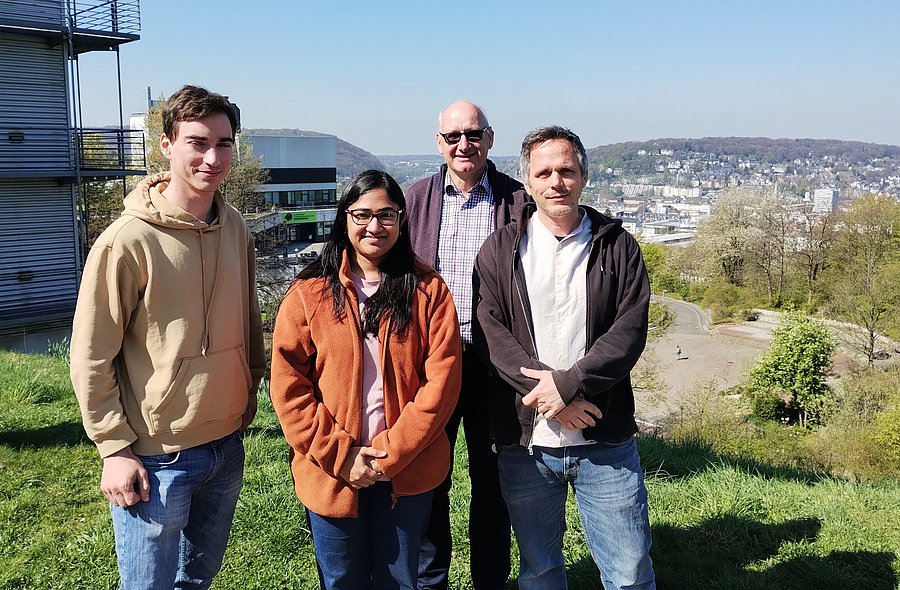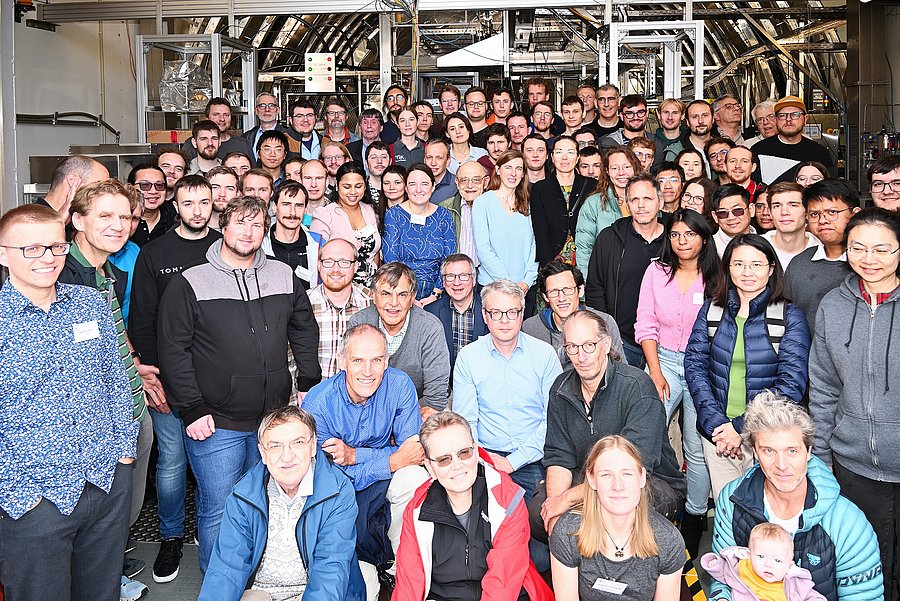Astroparticle physics: Science publication
Unprecedented precision: New world record for measuring neutrinos

View inside the KATRIN main spectrometer // Photo M. Zacher/KATRIN Collaboration
Neutrinos are among the most mysterious particles in the universe. They are omnipresent, but react extremely rarely with matter. In cosmology, they influence the development of large-scale structures, while in particle physics they serve as indicators of previously unknown physical processes due to their tiny mass. The precise measurement of neutrino mass is therefore essential for a complete understanding of the fundamental laws of nature.
This is precisely where the KATRIN experiment, which is being conducted at the Karlsruhe Institute of Technology (KIT) with partners from seven countries, comes in. KATRIN utilises the beta decay of tritium, an unstable hydrogen isotope, to measure the neutrino mass. The energy distribution of the resulting electrons allows the neutrino mass to be measured directly. Sophisticated technical components are required to achieve this: The 70-metre-long experiment houses an intense tritium source and a high-resolution spectrometer with a diameter of ten metres. This technology enables unrivalled precision in the measurement of neutrino mass.
Analysing the data
The quality of the first data sets since the start of measurements in 2019 has improved continuously over the last few years. "We have analysed five campaigns with a good 250 measurement days from the period from 2019 to 2021 - this corresponds to around a quarter of the total data collection expected with KATRIN," explains Kathrin Valerius (KIT), one of the two co-speakers of the experiment. Susanne Mertens (Max Planck Institute for Nuclear Physics (MPIK) and Technical University of Munich (TUM)) adds: "In each measurement campaign, we have learnt more and further optimised the experimental conditions."

Researching the KATRIN experiment: the Wuppertal scientists from the Experimental Neutrino Physics working group. From the left: Dr Timo Stürwald, Shivani Ramachandran, Prof Dr Klaus Helbing and Dr Enrico Ellinger // Photo University of Wuppertal
The researchers at the University of Wuppertal (BUW) are contributing a special measuring instrument to the 70-metre-long high-tech structure: It can determine the decay rate of tritium with an impressive accuracy of one per mille to the second. But that is only part of the technical challenge, explains Dr Enrico Ellinger from BUW: "The device has to work in an almost perfect vacuum, precisely control moving parts - and all this in the strong magnetic field of superconductors and at temperatures that are only a few degrees above absolute zero."
The researchers in Wuppertal are also currently working flat out to eliminate interference signals in the measurement data - these are caused by highly excited atoms within the measurement setup. The scientists are using an innovative method to specifically eliminate these sources of interference: the use of terahertz radiation. "This is a completely new technique that we are currently researching together with specialists in this field," explains Prof Dr Klaus Helbing, Head of the Experimental Neutrino Physics working group in Wuppertal. "If we manage to use this method successfully, KATRIN will be able to realise its full potential."
Outlook
The researchers are optimistic about the future: "Our measurements of neutrino mass will continue until the end of 2025. By continuously improving the experiment and the analysis, as well as through a larger amount of data, we expect an even higher sensitivity - and possibly groundbreaking new findings," says the KATRIN team. KATRIN is already leading the global field of direct measurements of neutrino mass, with the first data exceeding the results of previous experiments by a factor of four.
The current result shows that neutrinos are at least a million times lighter than electrons, the lightest charged elementary particles. Explaining this enormous difference in mass remains a challenge for theoretical particle physics.
Further information
KATRIN website: www.katrin.kit.edu
Science Publication: https://www.science.org/doi/10.1126/science.adq9592; Science 388 (issue 6743), 180-185 (2025)

The KATRIN Collaboration, at a meeting in October 2024 // Photo J. Wolf/KATRIN Collaboration
